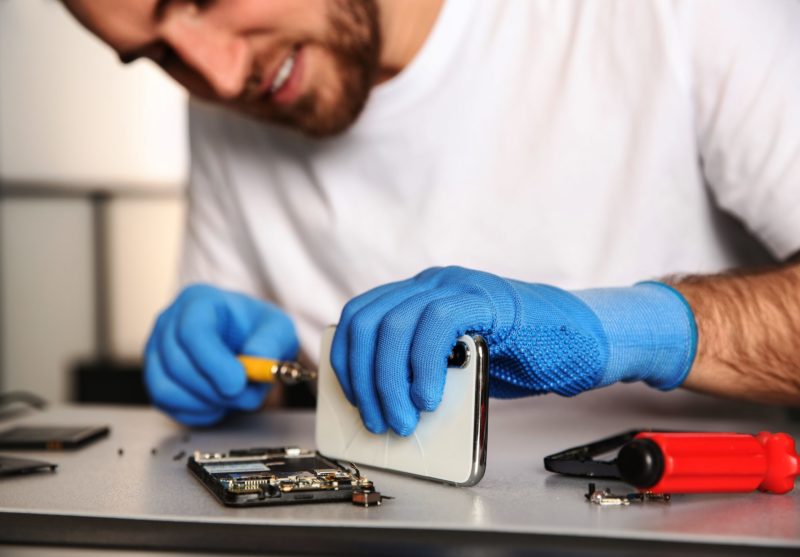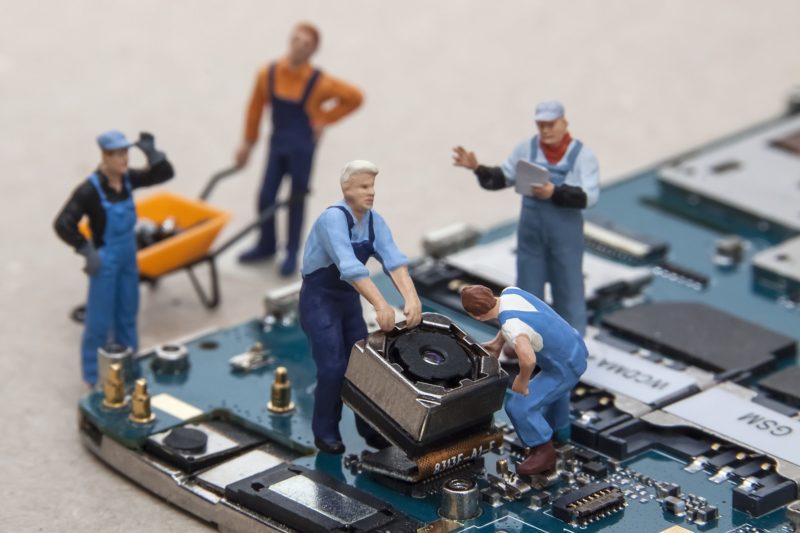In this day and age, living without a cellphone seems like an impossibility. Nearly everything is now technology-based, and you need a mobile device to be on the loop. However, similar to any other electrical gadget, phones are prone to failures, either due to an external impact or malfunctions within the equipment. Fortunately, most of these issues can be rectified quite easily, depending on the phone model and the severity of the issue.
Remember, every brand is manufactured with different elements. Therefore, regardless of your experience in the field, you’ll always come across new designs. The best thing about these gadgets is that their general functionality is similar. As such, you only need to slightly modify your available solutions to fit the faulty model. Whether you’re a professional phone technician or trying to do it for the first time, the tips in this article will help you complete the task successfully.
1. Arm Yourself With The Necessary Tools
Tools play a huge role in determining the success of your cell phone repair project. It doesn’t matter if you’re a seasoned professional or a newbie in the industry—the rule of thumb is to get all the equipment in order before embarking on the job at hand. A good workstation is one that has a tool for every task.
Here are the basic things you’ll need to get you started:
- Screwdrivers
- Tweezers
- Cutter
- Lead sucker
- Multimeter/tester
- Soldering gun and solder
- Brush
These are the most common tools that every technician should have; however, many other specialized ones might be required when working on specific phone models. In addition to buying all these pieces of equipment, you need to make sure that your workstation is organized. It can be quite frustrating when you’re in the middle of your work and you can’t find a screwdriver or cutter just because your desk is filled with a lot of unnecessary things.
2. Understand The Problem
Before you start dismantling the gadget, make sure you’ve reviewed the issue and have an idea of what might be faulty. Of course, it’s impossible to know where the real problem lies by just looking at the phone. However, narrowing down to a few possible factors will help save your precious time. Also, you’ll avoid messing up with the wrong parts while trying to determine the fault.
Smartphones are more sophisticated than the old handsets, which means the problem might not necessarily be hardware-related. For instance, fixing a parse error in Android smartphones requires a few tweaks of the software. Until you’re almost certain the phone’s software is working fine, don’t unscrew the device. If the device isn’t working at all, you can go ahead and open it up without going through all these procedures.
3. Keep The Data Secure
Before you start repairing the phone, make sure the data is safely stored to avoid deleting crucial information. In most cases, the data is more important than the gadget itself. Therefore, never delete anything without the owner’s consent. If it’s not possible to retrieve whatever is stored in the phone, let the client know before proceeding to the next steps.
Set up a folder on your computer or an external disk where you’ll be storing this data. As soon as the phone is ready to use, copy back the information and let the customer confirm that everything is okay. Remember to delete the files from your computer unless advised otherwise by the client.
4. Remember The Location Of Every Part
Dismantling a cell phone can be very straightforward, provided you know what you’re doing. In the old days, it was quite difficult because there were all sorts of phones, such as sliders and flippers. Today, most handsets have a similar design with very few screws, mostly used to hold the inner parts in place. If this is your first time, make sure you know the process before starting. As such, you’ll avoid breaking some fragile parts or messing up with connectors.
You must remember the position of each part as you dismantle for this will enhance your assembly process. Some components might need a mark to remind you of their orientation. Perhaps, the best option when doing this kind of task, especially for beginners, is to keep the camera rolling from the first step. This way, you can easily refer to the video whenever you misplace a screw or aren’t sure about something.
5. Categorize The Screws For Easier Assembling
One of the most common mistakes made by beginners is forgetting to return all screws to their original spots. Remember, every screw is designed with specific thread pitch and width to fit in particular holes. Therefore, using the wrong screw will either mess up with the original threads printed in the hole or it will not be tight enough, which can be very risky.
So, how do you avoid such? Well, the best way is to categorize screws with similar sizes to avoid confusion. For instance, all those used to hold the external case, if any, have equal thread pitches. The same goes for the smaller ones used for internal components. This trick will not only prevent simple mistakes as stated earlier but also save you time.
6. Make Sure You Have All The Spares Available
If you’re fixing a cell phone for commercial purposes, then you already know the importance of having spare parts in place beforehand. As earlier stated in the article, you need to figure out a possible fault even before you start dismantling the gadget. Of course, as a professional, you’ll master the tricks and, with time, you’ll be able to guess the problem just by looking at the behavior of the phone.
Make sure you buy all the necessary spare parts before embarking on the task if you already know the issue. Of course, this isn’t always the case, especially for those who are new to the field. As such, you might need to open up the phone to a certain level for you to see the fault. However, don’t take everything apart before purchasing the replacement parts as you could misplace some vital components.
7. Take Care Of Fragile Parts
Technically, a smartphone is quite fragile. As such, it requires a lot of care when opening it and even during tests. However, some components can malfunction if handled poorly. The LCD, for instance, is, perhaps, the most expensive part of a smartphone. It can also break quite easily if dropped on the floor or under any minimal external force.
The motherboard is another very crucial part of a phone or any electrical device for that matter. Since it has thousands of circuits printed on it, an electric short on one end could impair the whole gadget. Of course, these are quite basic for any professional out there. They are, however, critical for those who love doing repairs on their own but have very little experience.
8. Secure The Customer’s SIM And Memory Cards
When you accept to repair a handset from your client, always make sure you keep the SIM and memory cards safely. The moment you start disassembling the phone, there are high chances that you’ll forget everything else. As such, you can easily misplace the cards, and this might lead to unnecessary costs. It’s recommended to have that you use a small box labeled with the customer’s name and other important details. Place the cards in this box and put it in a safe place for easy retrieval.
9. Make the Internet Your Friend
The Internet has an answer to almost every question you have in mind. Whether you’re a pro or just joining the industry, you’ll always have a few questions concerning the whole process of phone repairs. Always be ready to seek help from the experts either by contacting them directly or reading through the readily available content online. Remember, nothing is impossible, and there’s always an easier solution to what might seem quite time-consuming.
Apart from tips and new ideas, you can also visit manufacturers’ websites to check brand specifications and manuals. As you employ the help of the Internet, it’s important to take some advice with a pinch of salt. Separate the grains from chaff since many people are using this platform to peddle false information.
Conclusion:
For every tech enthusiast, it can be very satisfying to be able to repair gadgets and make them operational again. It’s everyone’s dream to make money by doing what they love, and technicians are no different. If you have a phone repair business or are just passionate about this job, then it would be very helpful to keep in mind the tips provided in the article. Generally, you need to be organized when dealing with smartphones because you’ll definitely come across very small components.
Misplacing these pieces can be very frustrating and this could make your job unsuccessful. Therefore, always keep your workstation organized and follow the right procedures when disassembling and assembling the phone. Also, arm yourself with all relevant tools before embarking on the task at hand. Finally, make use of the Internet and learn more from the experts. However, do your due diligence before deciding on the best advice.









![[Buy Now] ALLDOCUBE Freer X9 Review Tablet PC “Offer” Price (Buying Guide) Freer X9](https://www.techinpost.com/wp-content/uploads/2018/01/83e7d39bgy1fjux8u2zlbj20m80et4hn-324x235.jpg)






